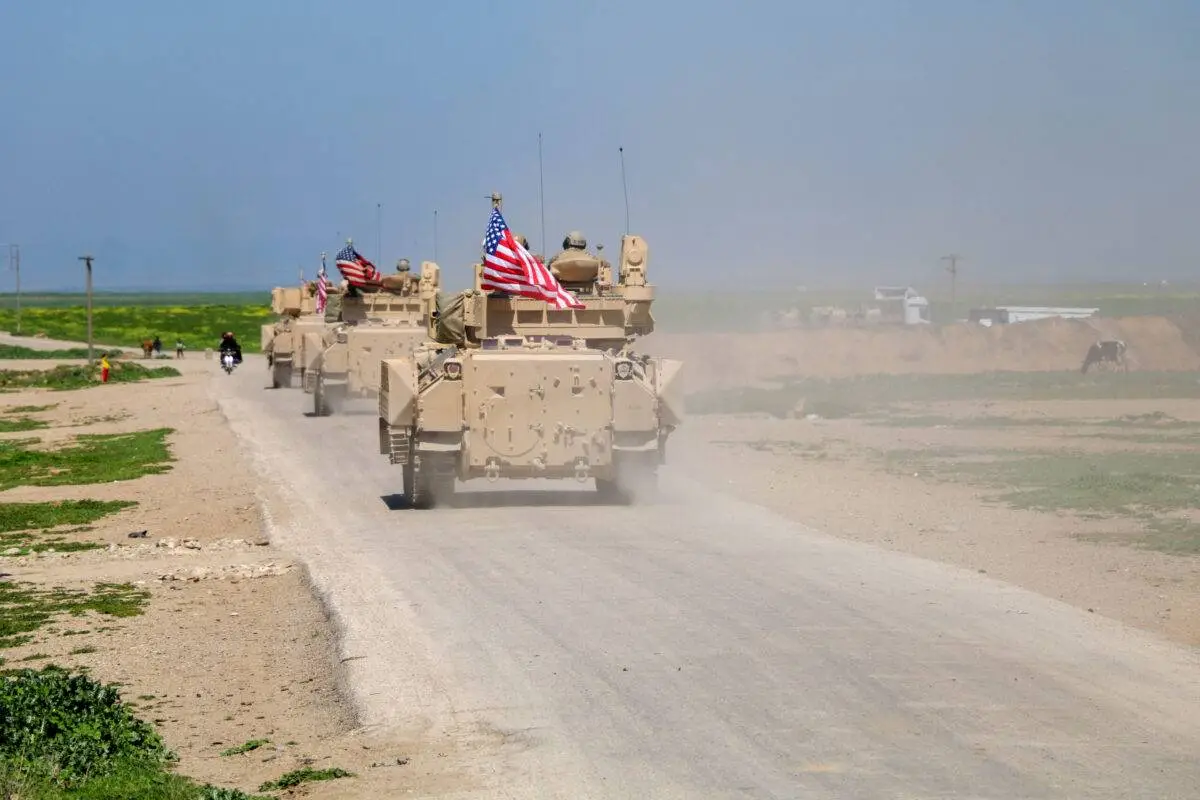U.S. Reportedly Bombs Own Base in Eastern Syria as Withdrawal Concludes, Marking Full Shutdown

The U.S.-led coalition has carried out a major phase of its long-anticipated drawdown in eastern Syria, withdrawing from three key military installations over the past week. The pullback—previously signaled but now visibly underway—saw convoys transporting equipment from Deir Ezzor to the Shaddadi base in southern Hasakah, then across the border into Iraq. The withdrawal was effectively capped by U.S. airstrikes that destroyed infrastructure around the Al-Omar oil field base, signaling the conclusion of operations there and marking a decisive shift in the coalition’s posture on the ground.
Context: In recent days, Coalition forces have transported dozens of military and logistical assets from Deir Ezzor to the Shaddadi base in southern Hasakah, before moving them onward to Iraq via convoys of heavy transport vehicles. The withdrawal appears to have reached a key milestone, marked by U.S. airstrikes that destroyed infrastructure near the Al-Omar oil field base in eastern Deir Ezzor, shortly after portions of the site were evacuated.
According to The New York Times, the U.S. is shuttering three of its eight small operating bases in Syria’s northeast: Mission Support Site (MSS) Green Village, MSS Euphrates, and a third, unnamed location. The unnamed facility is almost certainly the smaller Al-Omar oil field outpost, located adjacent to the larger Green Village base. Although both lie within the broader Al-Omar zone, they function as distinct installations.
Analysis: This U.S. repositioning appears closely tied to months-long negotiations involving the United States, Turkey, the Syrian Democratic Forces (SDF), and the Damascus government. These talks culminated in a tentative March agreement between the SDF and Damascus. While vague, the accord serves as a potential framework for the peaceful integration of SDF forces into a restructured Syrian state. Its success remains uncertain, however, depending heavily on evolving ground dynamics.

What is clear is that Washington seeks to reduce its military footprint in Syria while retaining a minimal yet strategic presence. The Pentagon reportedly favors maintaining a contingent of around 500 troops—a figure cited by senior military officials and echoed in the New York Times. Yet, the final decision may rest with Donald Trump, for whom Syria policy is primarily a matter of political messaging. Trump has consistently advocated for a full U.S. withdrawal, arguing that Syria holds little strategic value. From his perspective, maintaining 500 troops may not differ significantly from 1,000, as the key objective is to demonstrate a retreat from another “endless war.”
Nonetheless, Israeli efforts to influence this decision could prove significant. As Yedioth Ahronoth reported, Israeli officials are lobbying Trump to retain a limited U.S. presence in Syria. Yet the determining factor may be less about Israeli persuasion and more about developments with Iran. Should the U.S. reach a new agreement with Tehran, the prospects of a complete withdrawal from Syria would increase.
Such a move would alter the balance of power in northeast Syria, potentially strengthening Damascus’s negotiating position. This, in turn, would directly affect the SDF’s future. A central question is whether the SDF can preserve its cohesion and autonomy or will be absorbed into the Syrian Arab Army, thus forfeiting its political influence.









